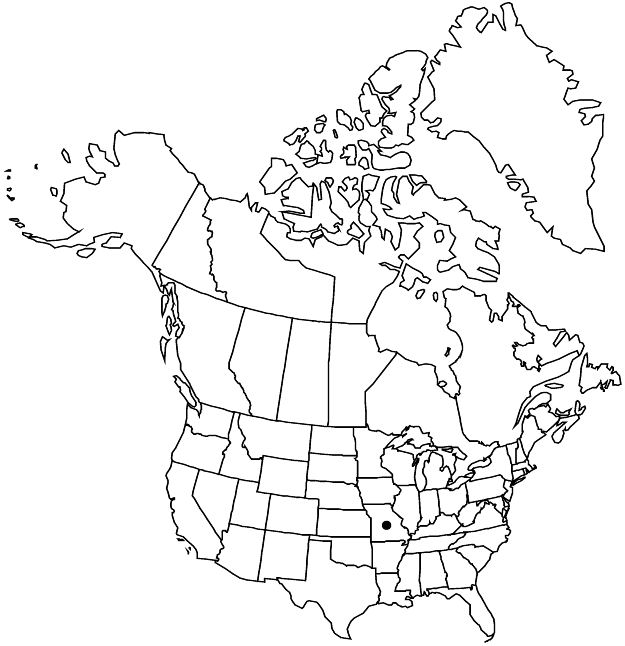Difference between revisions of "Crataegus ×atrorubens"
J. Elisha Mitchell Sci. Soc. 16: 78. 1900.
FNA>Volume Importer |
FNA>Volume Importer |
(No difference)
| |
Revision as of 23:09, 16 December 2019
Shrubs or trees, 40–60 dm. Stems: twigs: new growth not recorded, 1-year old bright red-brown, older grayish; thorns on twigs not recorded. Leaves: petiole slender, length 30–50% blade, adaxial sulcus pubescent; blade ovate, (3–)4–7 cm, base rounded to very broadly cuneate, lobes 3 or 4 per side, sinuses very shallow to ± deep, max LII 5–20%, lobe apex acute, margins serrulate, venation camptodromous, veins 4 or 5(or 6) per side, apex acute, abaxial surface with axillary hair tufts extending ± on basal part of leaf, adaxial sparsely appressed-hairy young, glabrescent. Inflorescences 6–14-flowered; branches sparsely pubescent; bracteoles usually persistent, linear-spatulate, margins glandular, sometimes caducous, linear, membranous, margins eglandular. Flowers 15–18 mm diam.; hypanthium densely canescent; sepals narrow, margins glandular-serrate; stamens 20, anther color not recorded; styles 4 or 5. Pomes dark red, orbicular, 9–11 mm diam., glabrous; sepals erose or ± reflexed; pyrenes 4 or 5, dorsally grooved, sides plane.
Phenology: Flowering Apr; fruiting Sep–Oct.
Habitat: Riverine flats
Elevation: 200 m
Discussion
Crataegus ×atrorubens is probably a hybrid of C. viridis × C. mollis, originating near St. Louis. The C. viridis parentage is apparent in the axillary tufts of hairs on the abaxial leaf surfaces and in the occasional presence of eglandular bracteoles; the C. mollis parentage is apparent in leaf size and shape. This handsome tree is much favored by arboreta; a quite different C. crus-galli hybrid is often misidentified as it.
Selected References
None.
